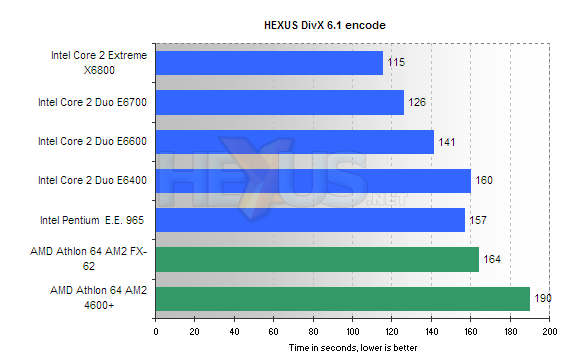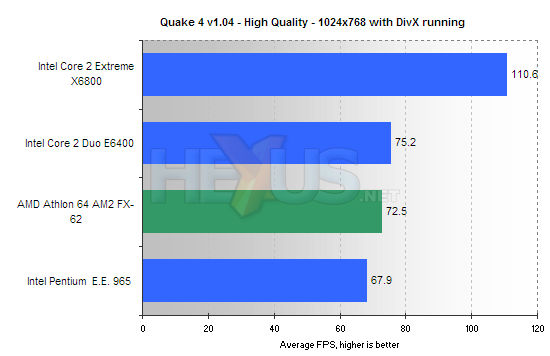Multi-app. performance
Multi-app. performance
We've seen that Core 2 Duo is an impressive processor when evaluated by either single- or multi-threaded benchmarks, but how does it perform when two benchmarks are run concurrently, replicating real-life usage?To test this, we ran our regular DivX and Quake 4 benchmarks at their respective settings. However, they were run together, started at the same time. We wanted to see how gaming and encoding performance dropped off when the processor was tasked to complete both simultaneously.
Let's trot out the respective graphs that we've shown on the previous pages.


Core 2 Duo hold a healthy lead over AMD's CPUs.
Now, here's DivX encoding with our Quake 4 benchmark running at the same time.

We've removed a few processors for brevity. What the graph is illustrating is the fact that all processors suffer with an additional workload. Kind of obvious, right? However, the Core 2 Extreme is still faster than any non-Conroe CPU which is run without additional load. The Pentium E.E 965, Athlon 64 FX-62, and Core 2 Duo E6400 all produce similar times.

The Quake 4 graph needs to be taken into consideration when looking at the DivX results and vice-versa. Core 2 Extreme not only produces the fastest DivX time but also churns out a decent Quake 4 framerate at the same time. The other CPUs are generally a match for each other, and it's worth noting that the Core 2 Duo E6400 is, essentially, a budget model, compared against the very best that Intel's Netburst and Athlon 64 FX have to offer.









